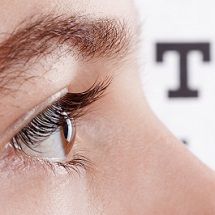Article
Subretinal Gene Therapy Improves Vision in Patients with Wet Age-Related Macular Degeneration
Author(s):
Treatment with recombinant adeno-associated virus vector gene-therapy was shown to be safe and potentially effective in a small test group of patients with neovascular age-related macular degeneration.

Australian researchers have found that treatment of neovascular age-related macular degeneration, or wet AMD (wAMD), through gene therapy appears to be safe and offers a promising avenue to treating the disease. An article describing the study conducted by Ian J. Constable, of the Lions Eye Institute in Nedlands, WA, Australia, and colleagues was published in EBioMedicine recently.
Recombinant adeno-associated virus (rAAV) vector gene-therapy is changing the approach to treating wAMD because, the researchers said, it has “the potential for longer-term control or reversal of pathogenic processes.” They also said that such long-term treatments create “the possibility of a paradigm shift in the delivery of ophthalmic healthcare.”
Along with rAAV, the present study investigated inhibiting vascular endothelial growth factor (VEGF), with an inhibitor known as sFLT-1. They say that sFLT-1 is “a naturally occurring VEGF inhibitor that is a soluble variant of the full-length membrane-bound VEGFR-1 protein.” Patients with wAMD have been shown in some studies to have lower sFLT-1 levels. A previous, phase 1 trial involving only six patients was conducted; in the present study, the researchers reported on a phase 2 trial with 21 patients with wAMD and 11 healthy controls.
The primary objective of this phase 2a trial was to confirm the results of the phase 1 trial and show that subretinal injection of rAAV.sFLT-1 is safe. The researchers stated, “Results of the study showed no serious gene therapy-related ocular or systemic side effects.”
A secondary aim of the study, said the researchers, was to investigate “the potential association between the safety and patient-focused efficacy of rAAV.sFLT-1 gene therapy delivered subretinally.” Additionally, they noted that there was limited biodistribution outside the targeted tissue and that what did exist was “limited and transient.”
The patients in this study were not treatment-naive, which the researchers claimed, “may have diminished the potential for large vision gains.” The small number of participants presented a limitation, and the researchers said, “The number of patients involved in the study was too small to make useful assessments of clinical outcomes.” They suggested more clinical trials are necessary to prove gene therapy is a viable option for treatment.
“Based on the results of this study, rAAV.sFLT-1 is safe when injected under the retina,” concluded the authors.
Related Coverage:
In Patients with Wet AMD, Cataract Surgery Shown Not to Increase Need for Anti-VEGF Injections
2 Commerce Drive
Cranbury, NJ 08512
All rights reserved.





